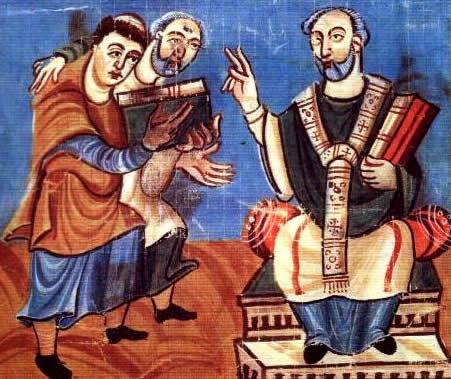Il 29 ottobre del 1971, cinquantatré anni fa, usciva nelle sale cinematografiche italiane Giù la testa, il capolavoro crepuscolare di Sergio Leone, un’opera che sembra ancora sospesa tra la polvere dei monti petrosi e l’eco delle rivoluzioni, tra la violenza della Storia e l’intimità delle passioni umane. Leone ci dona uno sguardo potente e disilluso su un Messico ribelle, ma è un Messico che potrebbe essere ovunque e in qualunque epoca, così come i suoi protagonisti, Juan Miranda e John Mallory, che incarnano la contraddizione dell’essere uomini in un mondo che oscilla tra sogno e inganno.
Il titolo stesso, Giù la testa, non è solo un invito a scappare dalle pallottole, ma una riflessione sul bisogno di piegare il capo di fronte alla forza degli eventi, alla Storia che incalza e travolge. È un’ode malinconica alla disillusione, alla caducità dei sogni e alla coscienza amara che ogni rivoluzione, per quanto nobile, spesso nasconde un prezzo troppo alto da pagare. Leone racconta la fine delle illusioni di gloria e l’inizio di un’età in cui le vite vengono barattate per ideali incerti.
Ogni inquadratura è pensata come un quadro, un microcosmo di significati che scorre sotto la superficie. La polvere, che invade ogni scena, non è soltanto un elemento scenografico: è sostanza visiva che unisce passato e futuro, memoria e dimenticanza, come se la Storia, alla fine, si dissolvesse nella polvere che tutto ricopre. Le esplosioni, le sparatorie, sono violente come la natura, ma sono inserite in un contesto di quiete silenziosa, in cui l’attesa tra una sequenza e l’altra sembra quasi una pausa tra un colpo di scena e un colpo al cuore.

Leone ci accompagna con la sua macchina da presa tra i volti segnati dalla fatica e dalla paura, dalla rassegnazione e dalla speranza, in un viaggio visivo che supera la retorica della guerra e del conflitto. Juan e John, personaggi profondamente diversi, sono portatori di una stessa disillusione, che emerge dai primi piani lenti e intensi, dove anche un solo sguardo racchiude parole mai dette e dolori mai rimarginati.
La rivoluzione è il cuore pulsante di Giù la testa, ma Leone ci mette di fronte alla sua crudeltà spoglia. La lotta per la libertà si tinge di sangue e la violenza, benché necessaria, non risparmia nessuno, non lascia intatti né corpi né animi. In Juan, contadino rozzo e istintivo, e in John, l’intellettuale disilluso, si riflette la tragicità dell’eterna lotta tra oppressi e oppressori. La loro relazione è una danza struggente tra amicizia e conflitto, tra idealismo e disincanto. Entrambi desiderano un mondo migliore, ma sono destinati a confrontarsi con il tradimento degli ideali e l’infrangersi delle speranze.
Il sogno di libertà si trasforma in un incubo e i veri nemici diventano le illusioni stesse. Leone ci rammenta, con la crudezza della sua narrazione, che la rivoluzione non redime: trasforma, distrugge e spesso lascia dietro di sé solo macerie.
E, poi, la colonna sonora di Ennio Morricone: un planh poetico che penetra nell’anima. Le note quasi sussurrate, eppure cariche di pathos, ci portano in un mondo dove il dolore diventa bellezza, dove l’umano si sublima nell’arte. Ogni melodia di Morricone è un’eco di un’umanità spezzata ma ancora desiderosa di essere compresa, un abbraccio sonoro che accompagna Juan e John fino alla fine della loro avventura e che lascia in noi un senso di perdita irrimediabile.
In Giù la testa, Sergio Leone ci presenta un affresco di anime, di vite travolte dagli eventi, di sogni traditi e di un’umanità che lotta per affermarsi anche quando tutto sembra perduto. È un’opera di una bellezza malinconica, dove ogni dettaglio contribuisce a creare un mosaico di sentimenti contrastanti. Leone sembra dirci che la Storia non perdona e che, forse, l’unica vittoria possibile sta nel ricordare ciò che è stato, nel custodire la memoria di chi ha lottato e perso.
“Giù la testa” è, così, un inno alla vulnerabilità umana, alla bellezza nascosta nella disperazione e nella disillusione, un capolavoro che continua a parlarci, a suggerirci che ogni guerra, ogni rivoluzione, non è mai una vittoria, ma sempre un sacrificio.

 Missionary Activity
Missionary Activity Anglo-Saxon Missions
Anglo-Saxon Missions